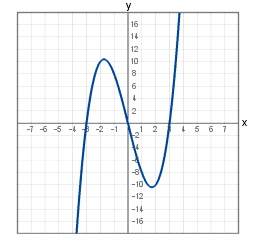Let (a,b,c) be a Pythagorean triple. Prove that 60 divides abc.
Bonus (difficult): prove that the only primitive Pythagorean triple for which rad(abc) = 30 is (a,b,c) = (3,4,5). Here rad(n) denotes the
radical of the positive integer n -- i.e., the product of the distinct prime divisors of n (with rad(1) = 1).
All primitive triples can be represented as (m^2 - n^2, 2mn, m^2 + n^2) by
https://en.wikipedia.org/wiki/Pythagorean_triple#Proof_of_Euclid's_formula, with m and n relatively prime, and one of them being even.
This means that mn(m - n)(m + n)(m^2 + n^2) must be divisible by 30. One of m, n is even, so the factor of 2 is taken care of. All possible pairs of values of m and n mod 3 produce something that is 0 mod 3 in m, n, m - n, m + n. In the case of mod 5, the only pairs which dont produce something that is 0 mod 5 in m, n, m - n, m + n, are (1, 2), (1, 3), (2, 4), (3, 4), which all produce 0 mod 5 in m^2 + n^2.
---------------------------------------------------------------------------------------------------------------------------------------------------
Bonus
m and n are relatively prime, and in order to satisfy the conditions, both of them can only have prime factors in {2, 3, 5}. By the Euclidean algorithm, {m, n, m - n, m + n} are pairwise relatively prime (using the condition that exactly 1 of {m, n} is even). In order to distribute the prime factors 2, 3, 5 among these, either n = 1, or m - n = 1, or both, since the 3 prime factors can not be distributed in 4 numbers.
If n = m - n = 1, then m = 2, creating the triple 3, 4, 5.
If n = 1, then the set {m - 1, m, m + 1} must contain 1 power of 2, 1 power of 3, and 1 power of 5. m has to be the power of 2. Since m^2 + 1 is represented as 4^k + 1 for some k, it can not be divisible by 2 or 3, so it must be a power of 5. However, since m^2 - 1 = (m - 1)(m + 1) is divisible by 5, m^2 + 1 is 2 mod 5, which is a contradiction.
If m - n = 1, then the set {m, n, m + n} must contain 1 power of 2, 1 power of 3, and 1 power of 5. This set can be rewritten as {m - 1, m, 2m - 1}. The value m^2 + n^2 can be rewritten as 2m^2 - 2m + 1. Since 2m^2 - 2m + 1 is 1 mod m - 1, 1 mod m, and m mod 2m - 1, it is not divisible by any of 2, 3, 5, so it must be divisible by different prime number(s).







